Among the shade trees introduced in Laos, a special place can be given to this strawberry tree which is planted everywhere, in no pre-established order, with the only concern for everyone to obtain shade. Indeed, its particular port, in the shape of a roof, makes it a real parasol. Because of its origin (tropical America), it is called in French Cerisier de Cayenne, in English Strawberry tree and in Lao tone ta kop, literally “toad’s eye tree”; all these names refer to its small fruits, black before becoming red, edible, which delight children and feed birds.
It is an evergreen, fast-growing tree that can reach 10-12 m; its branches tend to lay horizontally or to bend towards the ground; their ovate-lanceolate leaves are rough to the touch with a pointed apex and serrated edges, dark green in colour. Its flowers are small, solitary or in inflorescences of 2-3 flowers. They have five white petals.
If in Laos the only function of this tree is to provide shade and to feed the birds, in America laboratory analyses have shown that it contains antioxidants.
Parmi les arbres d’ombrage introduits au Laos une place spéciale peut être faite à ce strawberry tree qui est planté partout, sans ordre préétabli, avec le seul souci pour chacun de se procurer de l’ombre. En effet, son port particulier, en forme de toit, en fait un véritable parasol. En raison de son origine (Amérique tropicale), il est appelé en français cerisier de Cayenne, en anglais Strawberry tree et en lao tone ta kop, littéralement « arbre œil de crapaud »; tous ces noms font référence à ses petits fruits, noirs avant d’être rouges, comestibles, qui font les délices des enfants et nourrissent les oiseaux.
C’est un arbre toujours vert, à croissance rapide, pouvant atteindre 10 à 12 m; ses branches tendent à se disposer horizontalement ou à s’incliner vers le sol; leurs feuilles ovées-lancéolées, sont rugueuses au toucher avec un apex pointu et des bords dentelés, de couleur vert foncé. Ses fleurs sont petites, solitaires ou en inflorescences de 2-3 fleurs. Elles ont cinq pétales blancs.
Si au Laos la seule fonction de cet arbre est de donner de l’ombre et de nourrir les oiseaux, en Amérique des analyses de laboratoire ont montré qu’il contenait des antioxydants.
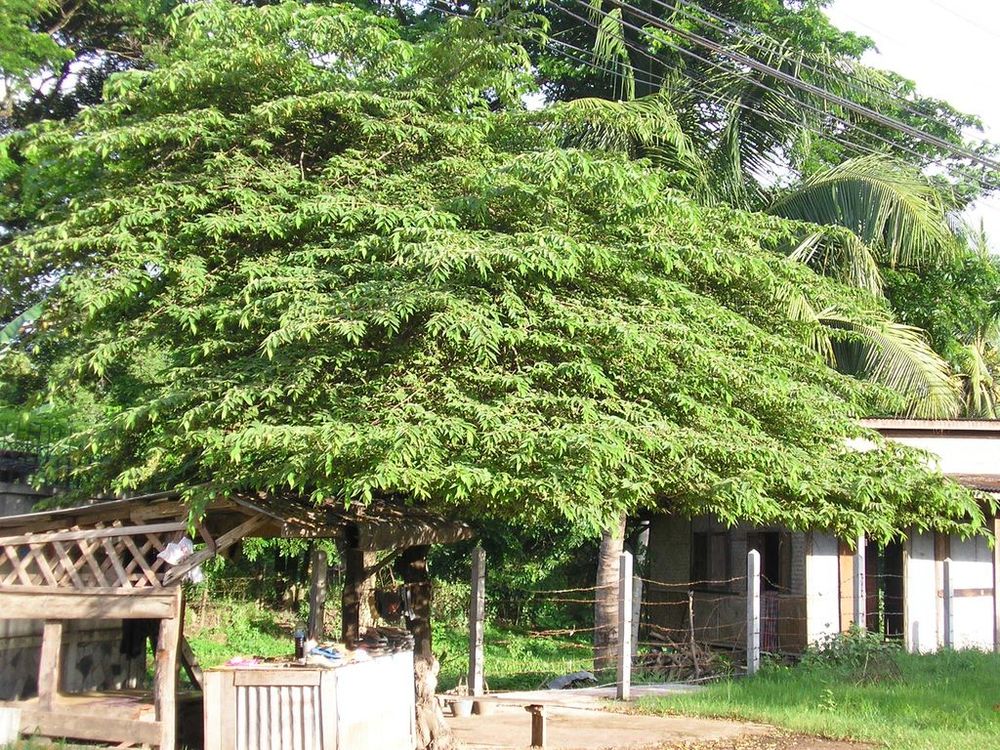
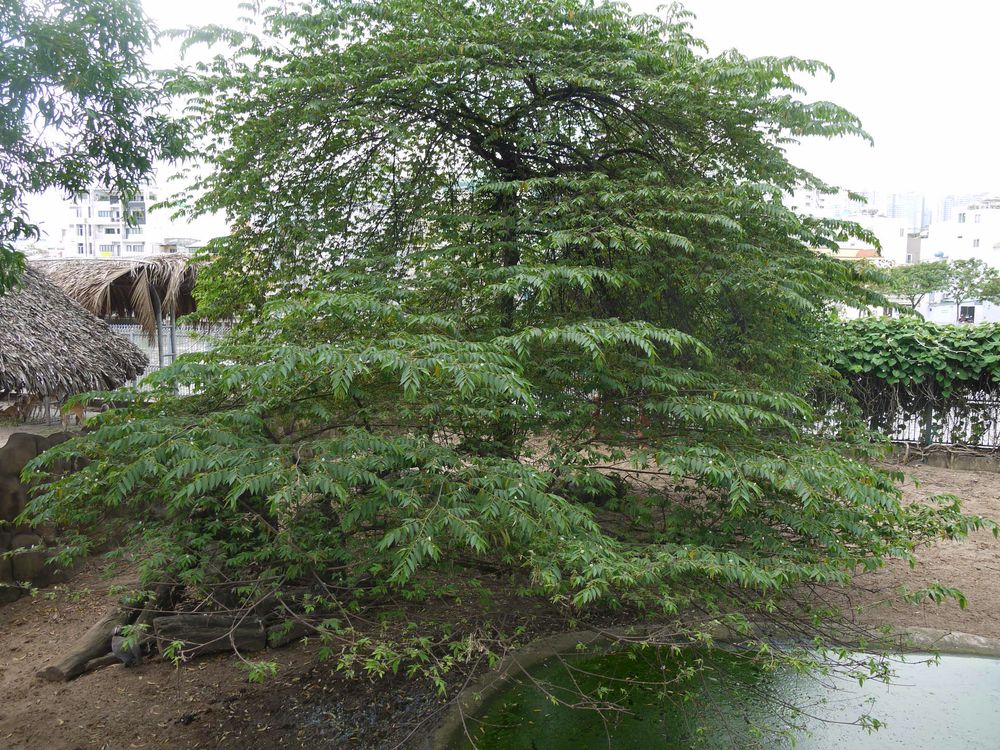
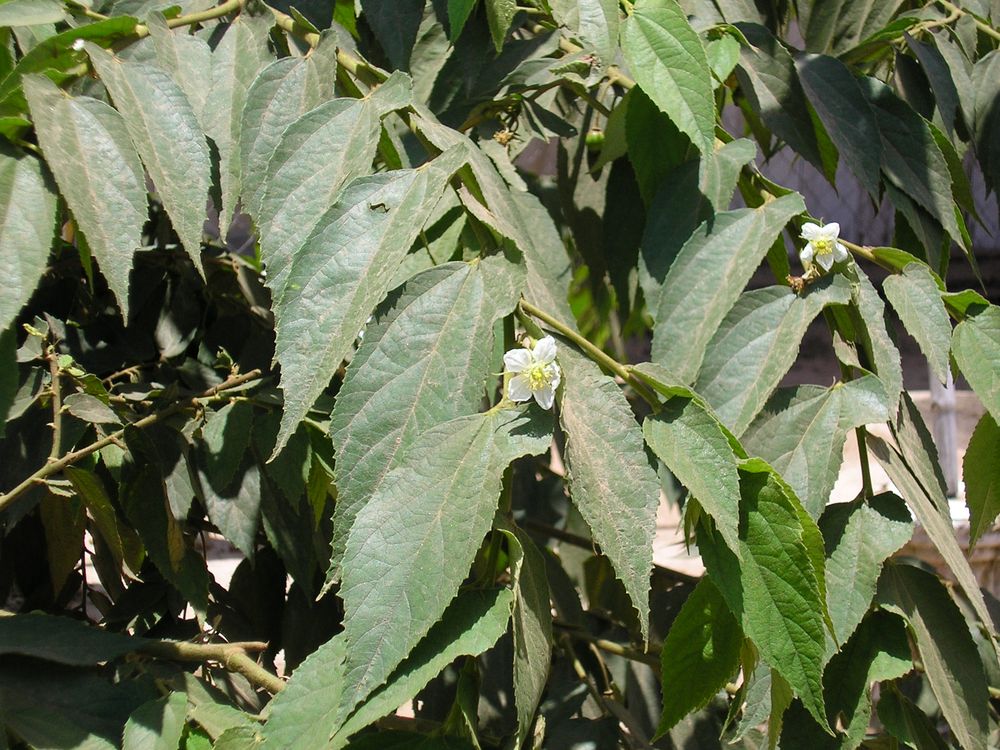
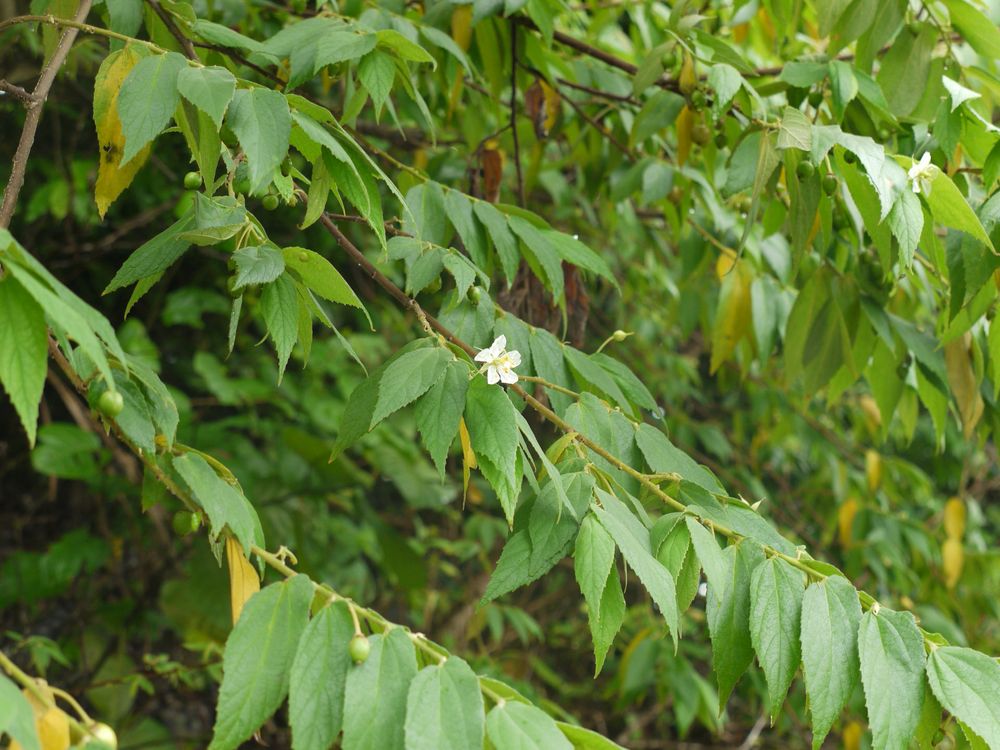
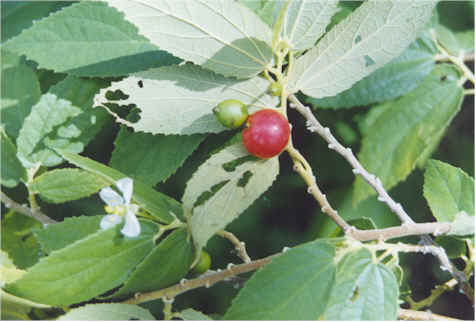
Among the shade trees introduced in Laos, a special place can be given to this strawberry tree which is planted everywhere, in no pre-established order, with the only concern for everyone to obtain shade. Indeed, its particular port, in the shape of a roof, makes it a real parasol. Because of its origin (tropical America), it is called in French Cerisier de Cayenne, in English Strawberry tree and in Lao tone ta kop, literally “toad’s eye tree”; all these names refer to its small fruits, black before becoming red, edible, which delight children and feed birds.
It is an evergreen, fast-growing tree that can reach 10-12 m; its branches tend to lay horizontally or to bend towards the ground; their ovate-lanceolate leaves are rough to the touch with a pointed apex and serrated edges, dark green in colour. Its flowers are small, solitary or in inflorescences of 2-3 flowers. They have five white petals.
If in Laos the only function of this tree is to provide shade and to feed the birds, in America laboratory analyses have shown that it contains antioxidants.
Parmi les arbres d’ombrage introduits au Laos une place spéciale peut être faite à ce strawberry tree qui est planté partout, sans ordre préétabli, avec le seul souci pour chacun de se procurer de l’ombre. En effet, son port particulier, en forme de toit, en fait un véritable parasol. En raison de son origine (Amérique tropicale), il est appelé en français cerisier de Cayenne, en anglais Strawberry tree et en lao tone ta kop, littéralement « arbre œil de crapaud »; tous ces noms font référence à ses petits fruits, noirs avant d’être rouges, comestibles, qui font les délices des enfants et nourrissent les oiseaux.
C’est un arbre toujours vert, à croissance rapide, pouvant atteindre 10 à 12 m; ses branches tendent à se disposer horizontalement ou à s’incliner vers le sol; leurs feuilles ovées-lancéolées, sont rugueuses au toucher avec un apex pointu et des bords dentelés, de couleur vert foncé. Ses fleurs sont petites, solitaires ou en inflorescences de 2-3 fleurs. Elles ont cinq pétales blancs.
Si au Laos la seule fonction de cet arbre est de donner de l’ombre et de nourrir les oiseaux, en Amérique des analyses de laboratoire ont montré qu’il contenait des antioxydants.










Among the shade trees introduced in Laos, a special place can be given to this strawberry tree which is planted everywhere, in no pre-established order, with the only concern for everyone to obtain shade. Indeed, its particular port, in the shape of a roof, makes it a real parasol. Because of its origin (tropical America), it is called in French Cerisier de Cayenne, in English Strawberry tree and in Lao tone ta kop, literally “toad’s eye tree”; all these names refer to its small fruits, black before becoming red, edible, which delight children and feed birds.
It is an evergreen, fast-growing tree that can reach 10-12 m; its branches tend to lay horizontally or to bend towards the ground; their ovate-lanceolate leaves are rough to the touch with a pointed apex and serrated edges, dark green in colour. Its flowers are small, solitary or in inflorescences of 2-3 flowers. They have five white petals.
If in Laos the only function of this tree is to provide shade and to feed the birds, in America laboratory analyses have shown that it contains antioxidants.
Parmi les arbres d’ombrage introduits au Laos une place spéciale peut être faite à ce strawberry tree qui est planté partout, sans ordre préétabli, avec le seul souci pour chacun de se procurer de l’ombre. En effet, son port particulier, en forme de toit, en fait un véritable parasol. En raison de son origine (Amérique tropicale), il est appelé en français cerisier de Cayenne, en anglais Strawberry tree et en lao tone ta kop, littéralement « arbre œil de crapaud »; tous ces noms font référence à ses petits fruits, noirs avant d’être rouges, comestibles, qui font les délices des enfants et nourrissent les oiseaux.
C’est un arbre toujours vert, à croissance rapide, pouvant atteindre 10 à 12 m; ses branches tendent à se disposer horizontalement ou à s’incliner vers le sol; leurs feuilles ovées-lancéolées, sont rugueuses au toucher avec un apex pointu et des bords dentelés, de couleur vert foncé. Ses fleurs sont petites, solitaires ou en inflorescences de 2-3 fleurs. Elles ont cinq pétales blancs.
Si au Laos la seule fonction de cet arbre est de donner de l’ombre et de nourrir les oiseaux, en Amérique des analyses de laboratoire ont montré qu’il contenait des antioxydants.


